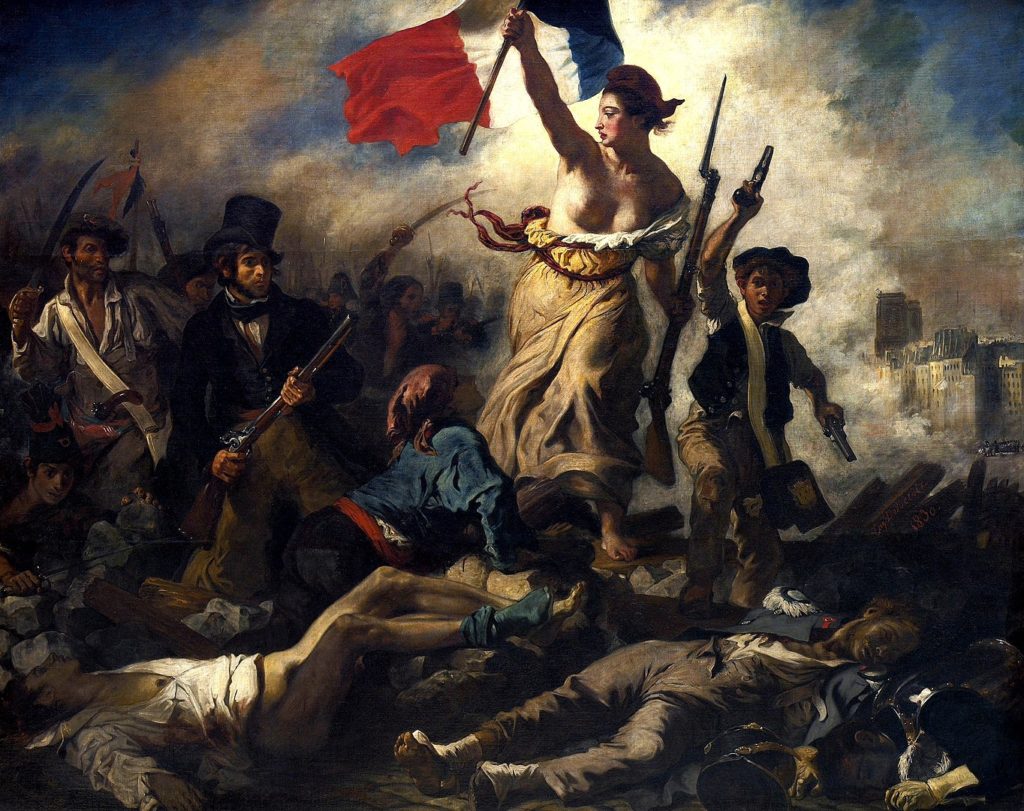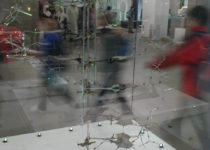These 2 Contrasting Research Approaches Decide Whether Or Not You Will Arrive At The Truth

Research essentially can be boiled down to one simple goal- finding the answer to your question, or seeking truth. All of research, be it in physical sciences like physics, chemistry, biology, in humanities, history, language, arts, or psychology, in commerce and economics, or in something truly abstract and fundamental, like mathematics, involves trying to answer a question. So no matter what area you work in, if you are striving to do something new in your area, you will need to know how to find answers to as yet unanswered questions. In this post, I will describe two contrasting approaches you can use to go about finding answers, namely, realism and relativism.
Realism And Relativism
If you are a realist, it means you believe that only one truth exists, and it is context independent. In other words, it stays the same no matter what context you view it in. The structure of DNA for example, doesn’t change no matter what organism that DNA belongs to. And the structure of a carbon atom stays the same no matter what molecule that carbon atom is a part of.
These objective truths can be measured using objective measurements, and can be generalized. Once you discover the structure of human DNA, you know what the DNA of a mango tree looks like as well. And once you know the what a carbon atom in a carbon dioxide molecule looks like, you know what a carbon atom in ethanol looks like as well.
There is even a specific method, in fact, known as the dialectical method, or dialectic, which involves a logical debate between two people to systematically weed out the personal biases and prejudices of the two people who believe in two different versions of the truth. The expectation is that through the debates and arguments, the two people will cancel out each other’s personal biases and together arrive at the one objective truth, which is context independent. This whole dialectical method is based on the principle of realism. And this method has been applied in the physical sciences, humanities as well as other disciplines.
If you are a relativist, on the other hand, then you believe the exact opposite of what realists believe. You believe that there is no objective truth. Instead, there are multiple versions of truth, and which version is the truth for you depends on what your perspective is, and what the context is. In other words, for a relativist, truth is context dependent. For example, if you are the citizen of a rich and flourishing country, the world is a good place four you. You and your family lead a comfortable life. That’s your truth.
If you are a Syrian, on the other hand, the world is a terrible place for you and your family, with violence, destruction, poverty and hunger. That’s your truth. Both the people live in the same world. Yet the world is two totally different places for them. What your truth is, or what kind of place the world is for you, depends on context. It depends on the unique situation you find yourself in. This is how relativists see truth. Realism and relativism are therefore, two contrasting ways to look at truth. And they are a part of ontology, the discipline of philosophy that deals with the nature of truth, reality and being.
Realism based research involves distancing yourself from the subject of research and studying it objectively, not letting yourself be affected by any of its intrinsic qualities. Like studying a gold fish in an aquarium standing outside. This realism based approach is called the ETIC approach. Relativism based research, on the other hand, involves diving head first into your subject of research and making yourself a part of it, so that you can see the world the way your subject of research does. Like diving into the aquarium and living with the gold fish in order to understand the way it sees the world. This relativism based approach is called the EMIC approach.
In the coming sections, we will look at various examples from multiple areas, and see which of these two approaches are more suited to which research problems.
Research In The Physical Sciences
Research in the physical sciences, like biology, chemistry, physics, medicine and engineering, most commonly involves a realist approach. It involves physical experiments that try to rule out all possibilities one by one, and the possibility that stays in the end, is assumed to be the true cause of the phenomenon being investigated. The truth. In other words, the physical experimentation strategy tries to distill out the truth from all the different contexts, with the assumption that the truth is context independent.
In astrophysics experiments for example, researchers go to great lengths to make sure that a radio signal detected by a radio telescope originated from a star and not from a human source like a radio station on earth. Similarly, attempts to detect gravitational waves involve pain staking efforts to rule out cosmic dust as the source of signals detected by observatories, to make sure the signal indeed came from a gravitational wave.
In biochemistry experiments, you need controls to make sure that there are no contaminating signals in your results. For example, if you want to study the effect of a mutation on a microbe, you must compare the mutant microbe with the normal microbe to understand if the mutation has indeed made a difference.
Perhaps one of the most well known examples of such realism based experimentation is clinical trials to study the effects of drugs on patients. As the video below shows, these trials involve using two control groups, one given the real drug and the other given a placebo, of a fake drug that is basically just a sugar pill and does nothing. And the patients are unaware of whether they are being given the real drug or the placebo. Often, even the doctors themselves are not told which patient is being given the real drug or placebo.
All this is done to ensure that the human psychological biases don’t obscure the real result. So that it is guaranteed that if a patient feels better after taking the drug, is feeling better because the drug actually works, and not simply because he believes that the drug works and therefore just taking the drug has made him feel better psychologically (in which case he would feel better even on taking the placebo, giving away his psychological bias).
Also, it must be guaranteed that the doctors deem the patients to be doing better on being given the drug, because the drug actually works, and not because the doctors believe the drug works (which is why they are not told which patient is given the real drug or placebo). In fact, this objective, realism based etic approach is at the heart of the relentless march of science and technology that has brought us everything from the moon landings to the structure of DNA and the atom, and from airplanes and satellites to smartphones and nuclear power plants.
And perhaps the area that involves realism based approach of research more than any other area, is mathematics. In this most fundamental of all subjects, only a few truths are accepted as truths without proof, as mathematically its impossible to prove that they are truths, and yet common observation shows that they are indeed the truths. Called axioms, these truths are considered self evident, and therefore not requiring proof.
In fact, any line of logical reasoning has to start with an axiom, that cannot be proven but must be simply accepted as true. Because if you try to prove that axiom, than the logical reasoning involved in the proof will itself rely on other truths that themselves must then be proven. This will go on until you reach truths that can no longer be proven but must be accepted as true based on observation.
However, most other truths in mathematics are not axioms but postulates and theorems. They are truths that can be mathematically proven. And regardless of whether a mathematical truth is an axiom or a postulate or a theorem, it is a context independent truth. 1+1=2 regardless of whether you calculate it on earth or on mars. And the Pythagoras theorem similarly stays true across time and space. In the next section, however, we will see truths in other disciplines like humanities, where truth is usually not context independent but context dependent. It does change from planet to planet and from time to time.
Research In Film Production And Fiction Writing
Cast Away is a 2000 survival drama movie starring Tom Hanks in the lead role. Tom Hanks plays the role of a FedEx employee who is stranded alone on a remote, uninhibited island in the middle of the ocean, far away from civilization, for four long years. The movie was a huge success, grossing $429 million worldwide, with Hanks being nominated for Best Actor in a Leading Role at the 73rd Academy Awards. What most people are not aware of though, is that the movie’s screenwriter William Broyles Jr. deliberately stranded himself on a deserted island in the Sea of Cortez off the coast of Mexico, fending off for himself all alone for many days.
This isn’t uncommon in film making. Directors, producers and actors frequently live in the conditions the characters of the movie are supposed to go through. Because it is a well accepted notion in humanities that you need to be a part of the subject of your research, instead of objectively studying it from the outside. In other words, much of the research in humanities involves emic approach, as opposed to research in the physical sciences. In fact, actors are supposed to “become” their character. They are supposed to believe they ARE the character they are playing, and see the world from the eyes of the character.
It is through the emic approach, living alone on a deserted island just like his movie’s character, that Broyles truly understood what it means to be in that situation. That being stranded alone on an island and fending off for yourself involves not just physical struggle but mental struggle as well, including loneliness and hopelessness. Broyles actually taught himself how to fish using a wooden spear he built, and befriended a volleyball that had washed up on the shore to fend off loneliness. And these are features that he incorporated into the movie. It was because he developed such an in and out understanding of this struggle, that the movie went on to be such a huge success.

Making a good movie always involves delving into the subject and becoming a part of it, to see things the way the movie characters would see them. This is regardless of what genre the movie belongs to. For this reason, making movies about historical events that happened hundreds or thousands of years ago involves a lot of hard work in research. Because its not easy to see things the way people from a very different world from a bygone era would see, as those people and that world are not here anymore. All you have is historical records and archaeological evidence to try and understand the psychology of people in that era.
In fact, this emic approach is required for research not just for making a good movie, but for writing a good novel as well. This is why many of the really great novels come from people who have actually been in that walk of life. A war novel, for example, is best written by a veteran soldier who has fought in a real war and has therefore seen things the way the characters of the fictional war in the novel would see.
One such example of a military veteran writing truly engaging war novels because of his own personal experience is Craig Martelle. Similarly, a novel about the lives of Federal agents would be written best by an actual FBI agent, like Jerri Williams. A novel about the lives of cops would be best written by an actual cop, like Patrick O’Donnell. And a medical thriller novel would best be written by an actual doctor, like Robin Cook. These are all examples of emic approach, involving actually living through the experience before writing a work of fiction on it, leading to great results.
This is not to say, however, that you can’t write a great war novel if you are a civilian. Its just that you’d have to work way harder, interacting with war veterans, reading up on wars, and trying best to see things the way your characters would see them. Tom Clancy, for example, wasn’t a soldier. But he wrote some of the best war novels around because of his interactions with service personnel and thorough research.
Research In Law And Justice
Another example of emic approach being utilized to its fullest is the way lawyers build solid arguments and watertight cases for their clients. At first glance, their conduct might seem unprofessional and even downright corrupt to non experts. After all, even suspected murderers get a lawyer and the system tries its best to give them a fair trial. In this process, the person’s lawyer tries his best to build an argument that would either suggest that the murderer is innocent, or make clear the compulsions that led to the murder, to minimize the sentence.
This way, the lawyer is immersing himself into the whole episode that led to the crime, and trying to see things from the perspective of his client. A lawyer’s perspective of the situation, can therefore be seen as anything but unbiased. He doesn’t have an interest in punishing the real criminal. He has an interest in getting his client off the hook, regardless of whether or not he actually committed the crime.
In fact, one could say that in dealing with their client over the course of the case, lawyers often get emotionally invested in seeing their client get acquitted. Pretty much as emotionally invested as the clients themselves are. The lawyers, in other words, dive into the aquarium and swim with the fish. Why does the law allow such a seemingly perverse approach? Its because it is only by seeing things from the under trial person’s perspective, and not from a detached, objective perspective, that the lawyer can accurately present the circumstances that led to the crime, which might either reduce or increase the sentence handed out by the judge. The lawyers representing the two parties, therefore, take the emic approach.
The judge, on the other hand, takes the etic approach. He listens to the entire point by point, and not necessarily unbiased arguments of the lawyers from both sides, and based on these inputs, studies the whole case in a detached, unbiased, objective manner, without any form of attachment to either of the parties. The judge, in other words, observes the fish in the aquarium from outside, taking utmost care not to wet himself. It is this combination of emic approach by the lawyers and etic approach by the judge that is expected to lead to a truly fair trial, which is why it has been designed this way.
Research In Politics

There is an old saying in India, that if the subjects of a kingdom are blind, then the King should also sacrifice one of his eyes, so that he can feel the misery of his people. The second eye should be kept so that he can still look at things as an outsider, the way his people can’t. This is an excellent summary of what research in politics involves.
A politician must see things through the eyes of the people, so that he truly understands their issues, and the way they see things, the emic approach. But he must also see things from outside the aquarium, so that he is not affected by the biases of the people and can take a truly sound and just decision, the etic approach.
Its only by seeing things from inside the aquarium, that a politician can really work for the betterment of his people. For this reason, many of the world’s great leaders have come not from the elite classes of the society, but from the poor, downtrodden masses. They got the support of the masses because they were one of them, and understood them. This is nothing but emic approach.
Being a good leader, however, involves not just emic approach, but a balance between emic and etic approach. This is because a leader must lead not just the section of society from which he has come and which he therefore understands the best, but all the different sections of the society, from the poorest to the richest, and people from all the different religions and races. And these different sections of society don’t just see things differently, but very often their views, opinions and interests clash with each other, as they all work for their own self interest over that of others.
A leader, therefore, must take the etic approach as well, viewing things from the perspectives of all the different sections of the society, and taking an objective, unbiased decision that balances the interests of the different sections as best as possible. A leader in other words, unlike the people from different sections of society, must view the issue from both inside and outside the aquarium. In this sense, if you compare the way a leader is supposed to work with the way lawyers and judges work, then a leader must play the role of a lawyer as well as a judge. This is one of the basic tenets of statecraft that every great leader is familiar with.
Realism Vs Romanticism
A concept closely related to relativism and the emic approach is romanticism. Mostly referred to in context of art, romanticism is a way of looking at an event with emotional investment in it, instead of viewing it in a detached manner as someone who hasn’t been affected by it. It started as an intellectual movement in the 1800s, in response to the increasing sway of realism based scientific thinking resulting from the industrial revolution. Realism and romanticism manifest themselves in art, as can be seen from the two paintings below, one painted from a realist perspective and the other from a romantic perspective.
The first painting below is Liberty Leading The People by Eugène Delacroix, painted in 1830. You can see that the artist made an effort to glorify the French revolution and its ideals in the painting. Liberty has been personified as a brave and beautiful woman carrying the French flag, and leading the people to the fight against King Charles X of France. She and the people are depicted has heroes fighting against evil. Clearly, the artist had a message to convey through this work. The message of the greatness of France, liberty and the ideals of the revolution against the exploitative monarchy. This is romanticism in art, being emotionally invested in what you paint or write about, being inside the aquarium.

Now take a look at the second painting, painted in 1878 by Jules Bastien-Lepage. This one really doesn’t seem to be conveying any emotional or political message. Its just a painting of two village women doing the mundane task of harvesting. There is no element of glory or passion or the supernatural. In fact, you can see that the artist has tried his best to depict the scene as realistically as possible, so much so that from a distance, you might mistake it to be an actual photograph. This is realism in art. You try to depict a scene exactly as it would look in real life, without any emotional investment in it, looking at the aquarium from the outside.

Realism and romanticism is seen not just in paintings but in how people approach real life events depending on where they happen. Generally, we tend to look at events happening in our own country from a romantic perspective, as being from the same country, the events affect us and we are emotionally invested in them. But the same events happening elsewhere in the world are seen by us from a realist perspective, as we are detached from them both physically and emotionally, and can therefore take an outsider’s view.
Thus, Americans tend to romanticize the American civil war, but view the Syrian civil war from a realist lens. The Syrians, on the other hand, will surely romanticize their own civil war over time. The side that emerges as the victor will glorify the bravery and sacrifice of its soldiers and the civil war will be woven into the national narrative of the country, evoking pride among its people.
To the west, with a realist lens, the Syrian civil war is nothing but an unfortunate human catastrophe. To the Syrians with a romantic lens, however, it is a tale of bravery and sacrifice, vindicating their patriotism, just like the American civil war is to Americans. The same can be said of the European Renaissance and the Arab spring. And this would have an impact on how one researches the civil war. Whether utilizing the etic approach or the emic approach.
Conclusion
These are just a few examples from the different areas that show how the etic approach of research based on realism, and the emic approach of research based on relativism, have contrasting features, and while some areas of research prefer the etic approach, others prefer the emic approach and still others prefer a balance between the two. In fact, this is something you notice even in things as mundane as trying to counsel a friend who is going through an adverse life event like a job loss, a break up, a divorce, or God forbid, the death of a loved one.
You can counsel them way better if you have been through the adverse event yourself in the past, because that allows you to see things the way they are seeing them. On the other hand, you can also prevent them from taking rash decisions in the middle of their misery, because unlike them you are not in the middle of the crises any more and can now look at it from the objective perspective of an outsider as well. This is the essence of how humans help each other and collectively solve problems to take the civilization forward one step at a time.



Hi Pranshu. This is a wonderfully written article. I thoroughly enjoyed reading it. The way you blend the perspectives of sciences and humanities is amazing. However I have a suggestion, it would be great if you can make an option available for sharing these articles on various social media sites like the ones you see on web pages of various news sites. It automatically creates a thumbnail and lets you share the article on SM platforms. This will increase the reach of your writing and will fetch you more hits on your site.
Hi Kathan. Thanks a lot for your suggestion! Yeah I too have been thinking of including the option of sharing on social media platforms. But since I have just started the site, it will take me a while to figure out how exactly to do that. Meanwhile, if you access this site through mobile, you can directly share the page through the share options in the browser. But I will try to include the options within the site too ASAP.
Edit: Have done it. You can see the social share buttons on top of the posts now.
Regards.